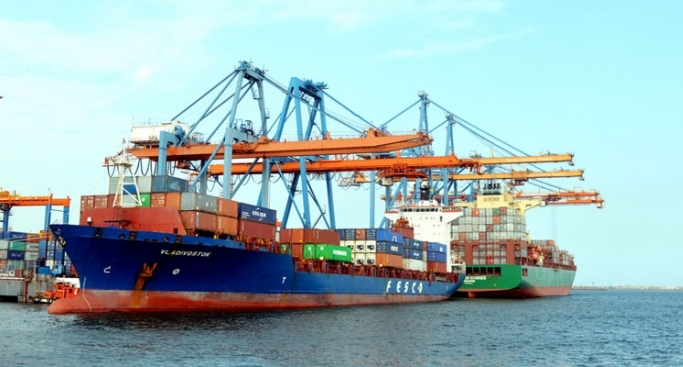VCT sets eyes on crossing 0.5 million TEUs in FY 2019-2020
September 24, 2019: Visakha Container Terminal (VCT) handled over 0.45 million twenty-foot equivalent units (TEU) during the financial year (FY) 2018-2019 and is on the verge of crossing the 0.5 million TEUs mark in FY 2019-2020.

September 24, 2019: Visakha Container Terminal (VCT) handled over 0.45 million twenty-foot equivalent units (TEU) during the financial year (FY) 2018-2019 and is on the verge of crossing the 0.5 million TEUs mark in FY 2019-2020.
The growth has been attributed to a steady growth in traffic to/from adjoining areas at a progressive rate of 16 percent, complemented with inbound and outbound rail movement from/to the hinterland and also transhipment.
The transhipment volumes at VCT grew at a remarkable rate of 148 percent in FY19 over FY18. With the continuous growth in transhipment volumes and with the patronage from various lines like RCL, WHL, Evergreen Shipping, Samudera, Global Feeders and NVOCCs, the growth rate in FY20, as compared to FY19, for April to August is at 188 percent and is expected to rise further – with increased participation from other lines who are actively exploring VCT to be their partner in progress.
A new direct service has been announced to Mediterranean and Europe which will also bring connectivity with Africa and the Americas, making VCT truly global.
Located between Kolkata and Chennai, VCT is poised to become the preferred regional transhipment hub on the East Coast of India. Operations at VCT started in June 2003 with only feeder vessels that plied between Visakhapatnam to Singapore and Colombo, while the local volumes at the terminal grew at a steady pace. Keeping its growth in view, Visakhapatnam port was identified in the National Maritime Agenda 2010:2020 to be developed as a transhipment hub.



